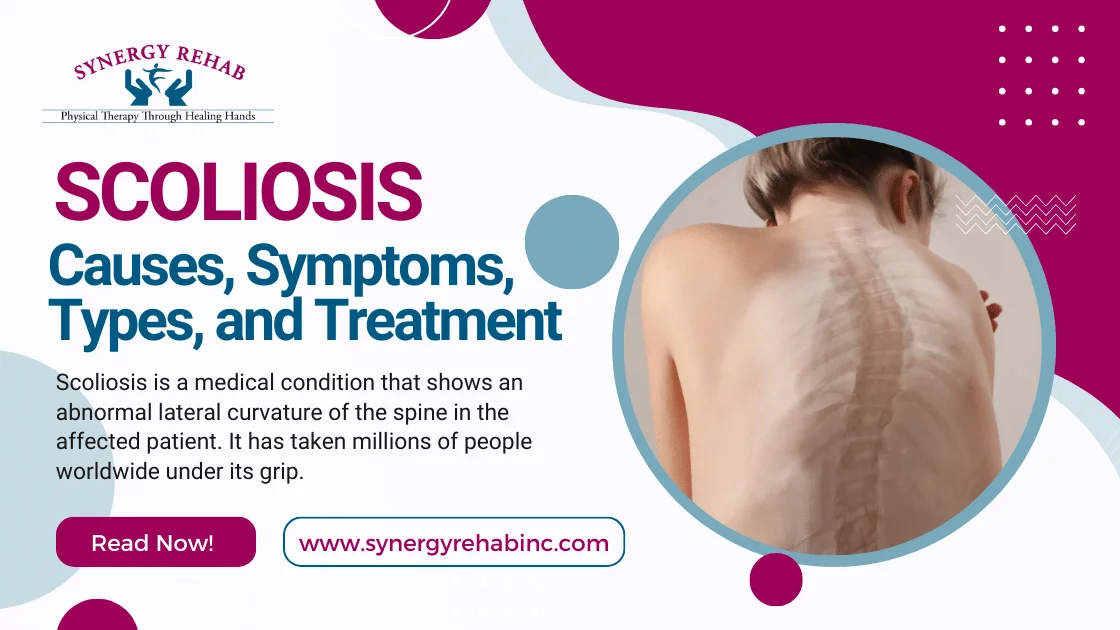Scoliosis is a medical condition that shows an abnormal lateral curvature of the spine in the affected patient. It has taken millions of people worldwide under its grip. It is time to explore the various aspects of scoliosis, focusing on nonsurgical scoliosis treatment options. Let us check the causes, symptoms, types, and effective methods for scoliosis pain relief and curved spine treatment.
Do not miss reading this comprehensive guide until the end, as it’s intended to provide valuable insights to patients, caregivers, or people interested in learning more about scoliosis treatment.
Understanding Scoliosis
Causes of Scoliosis
Scoliosis can develop for various reasons, and understanding these causes is important if an effective treatment is to be developed.
- Idiopathic Scoliosis is the most common type, and its exact cause remains unknown. It typically appears during adolescence.
- Congenital Scoliosis: This type results from abnormal spinal development in the womb.
- Neuromuscular Scoliosis: Conditions like cerebral palsy or muscular dystrophy can lead to scoliosis due to muscle imbalances and weaknesses.
- Degenerative Scoliosis: This type, often seen in adults, develops due to spinal discs and joint degeneration.
Symptoms of Scoliosis
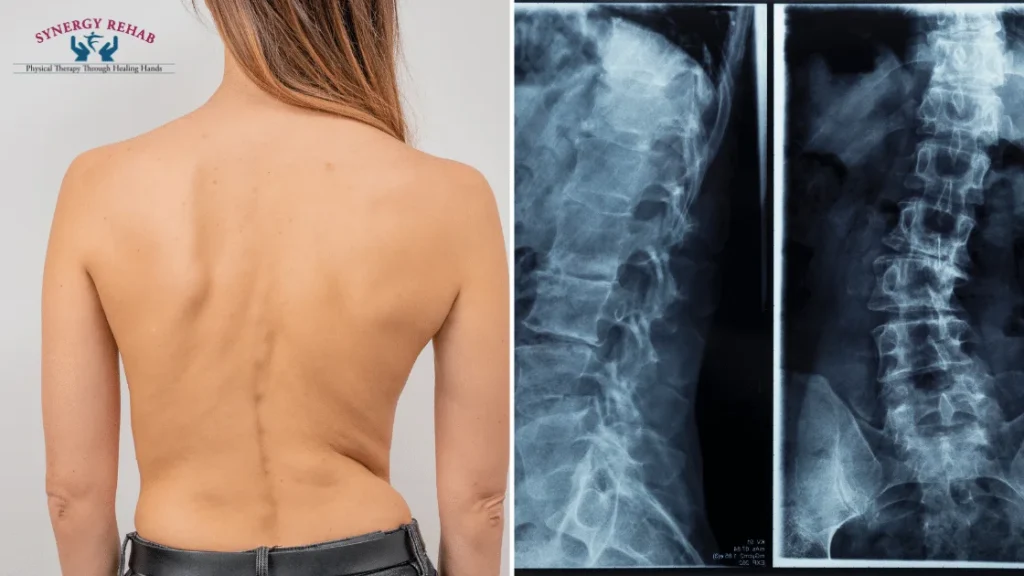
Scoliosis symptoms are very different from patient to patient, depending on the severity of the curvature and the individual’s age. Common symptoms include:
- Visible curvature of the spine
- Uneven shoulders or hips
- Back pain or discomfort
- Fatigue, especially after prolonged standing or sitting
- Difficulty breathing (in severe cases)
Types of Scoliosis
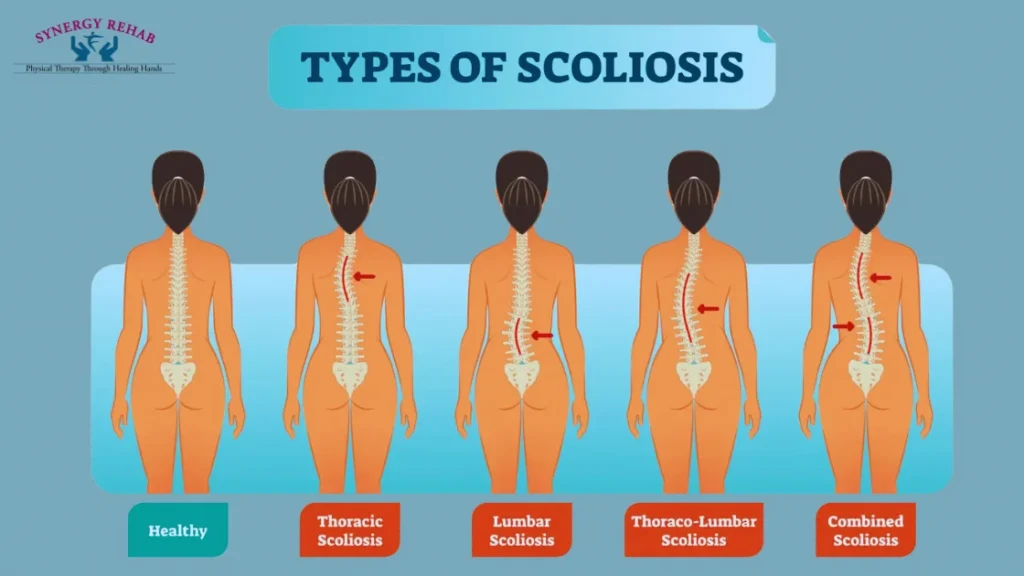
Understanding the different types of scoliosis is crucial for determining the most appropriate treatment plan. Each type of scoliosis affects different regions of the spine and may present unique challenges.
- Thoracic Scoliosis: Curvature occurs in the mid-back. This type of scoliosis can impact the rib cage and may affect lung function in severe cases.
- Lumbar Scoliosis: This type of scoliosis occurs in the lower back. It is often associated with lower back pain and can affect the alignment of the hips and legs.
- Thoracolumbar Scoliosis: This type of scoliosis’s curvature spans both the thoracic and lumbar regions. It can cause a combination of symptoms from both, making it particularly complex to manage.
- Combined Scoliosis: This type involves multiple curves in different spine regions, such as an upper thoracic curve combined with a lower lumbar curve. Due to the interplay between the multiple curves, combined scoliosis can be particularly challenging to treat, requiring a comprehensive and tailored treatment approach.
Nonsurgical Scoliosis Treatment
Nonsurgical scoliosis treatment is often the first line of defence for managing this condition, particularly in mild to moderate cases. The primary objective of these treatments is to reduce pain, improve function, and prevent further curvature progression.
Physical Therapy: The Optimal Solution for Scoliosis Treatment
Physical therapy has proven to be one of the best nonsurgical treatments for scoliosis. It offers a holistic approach to managing and improving scoliosis symptoms. Unlike other treatments that focus solely on symptom relief, physical therapy addresses the root cause of scoliosis by strengthening the muscles supporting the spine, improving flexibility, and enhancing overall spinal health. This comprehensive approach alleviates pain and helps prevent further curvature progression, making it an essential component of scoliosis treatment and management.
Physical Therapy for Back Pain
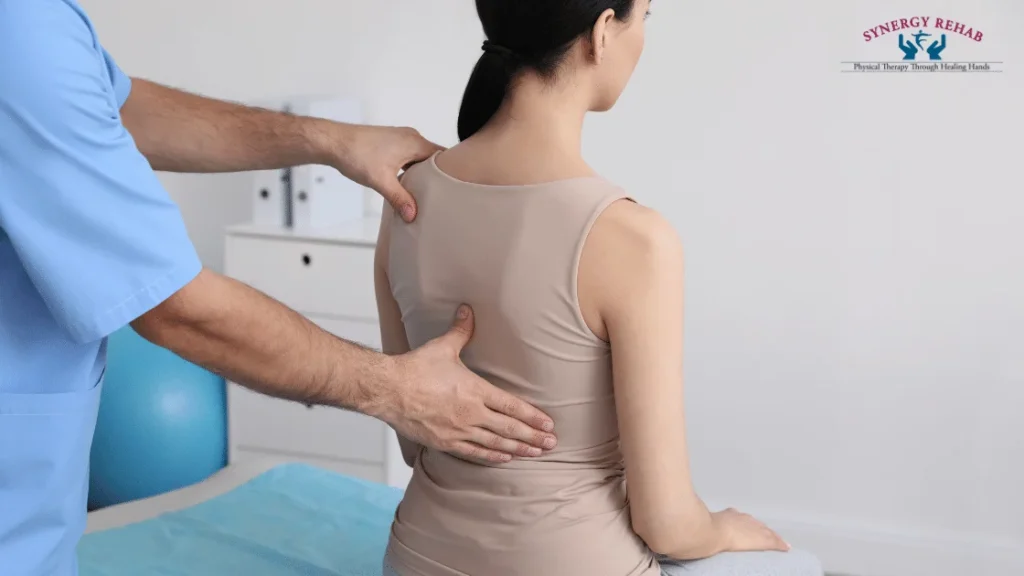
A physical therapist can design a customized exercise program for back pain to strengthen the muscles and reduce the pain caused by scoliosis.
Key components of physical therapy for scoliosis include:
- Stretching Exercises: These help improve flexibility and reduce muscle tension.
- Strengthening Exercises: Targeting the core and back muscles to provide better support for the spine.
- Postural Training: Teaching patients how to maintain proper posture to alleviate pressure on the spine.
- Manual Therapy: Techniques such as massage and joint mobilization to relieve pain and improve mobility.
Bracing
Bracing is often recommended for adolescents with scoliosis who are still growing. The goal of bracing is to prevent further curvature progression. Modern braces are more comfortable and less noticeable than older models, improving compliance and effectiveness.
Customized Treatment Plans
One of physical therapy’s greatest advantages is the ability to create customized treatment plans tailored to each patient’s unique needs. Physical therapists for back pain work closely with patients to assess their condition and develop a personalized exercise regimen. This includes stretching exercises to improve flexibility, strengthening exercises to support the spine, and postural training to correct misalignments. By focusing on each patient’s individual needs, physical therapy ensures the most effective treatment and long-term results for scoliosis pain relief.
Evidence-Based Benefits
Research consistently supports the benefits of physical therapy for scoliosis. Studies have shown that specific exercise programs can significantly reduce pain and improve spinal alignment in scoliosis patients. For instance, a study published in the Journal of Physical Therapy Science demonstrated that targeted exercises substantially improved pain levels and posture among participants. This evidence highlights the importance of physical therapy as a cornerstone of nonsurgical scoliosis treatment.
Preventing Further Progression
Physical therapy helps manage current symptoms and also prevents the progression of spinal curvature. Through regular exercise and strength training, patients can maintain a healthier spine, reducing the risk of their condition worsening over time. This proactive approach is especially important for adolescents, who are still growing and may be at higher risk of curve progression. Patients who include physical therapy in their treatment plan can achieve better long-term outcomes and maintain a higher quality of life.
Lifestyle Modifications
Certain lifestyle changes can significantly impact the effectiveness of scoliosis treatment. These include:
- Maintaining a Healthy Weight: Excess weight can exacerbate scoliosis symptoms.
- Regular Exercise: Staying active helps maintain muscle strength and flexibility.
- Ergonomic Adjustments: Using ergonomic furniture and adjusting daily activities to reduce strain on the back.
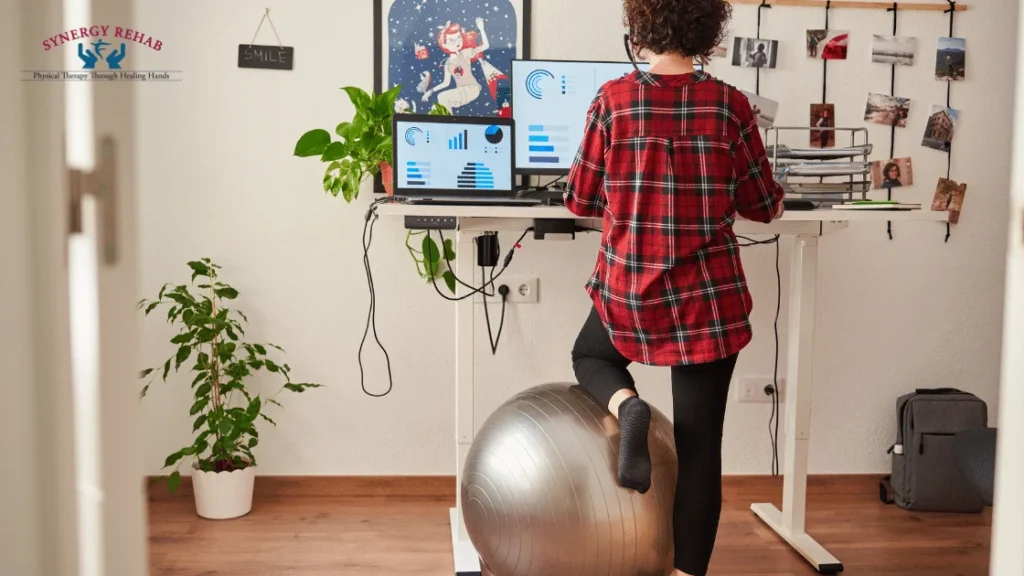
Medical Studies and Evidence
Several studies have highlighted the effectiveness of nonsurgical treatments for scoliosis. For example, a study published in the Journal of Physical Therapy Science found that manual therapy exercise programs specifically designed for scoliosis patients significantly reduced pain and improved spinal alignment. Another study in Spine Journal emphasized the benefits of bracing in preventing curve progression in adolescents with idiopathic scoliosis.
Way Forward
Nonsurgical scoliosis treatment offers a range of options for managing this condition effectively. From physical therapy and bracing to lifestyle modifications, patients have numerous tools at their disposal for scoliosis pain relief and curved spine treatment. Understanding the causes, symptoms, and types of scoliosis is crucial in seeking appropriate treatment and achieving the best possible outcomes.
If you or a loved one is experiencing symptoms of scoliosis and seeking professional care, consider Synergy Rehab in Southfield, Michigan. Our experienced physical therapists specialize in personalized, nonsurgical scoliosis treatment plans designed to alleviate pain, improve posture, and enhance your quality of life. Book your appointment today and take the first step toward effective scoliosis treatment and management.

